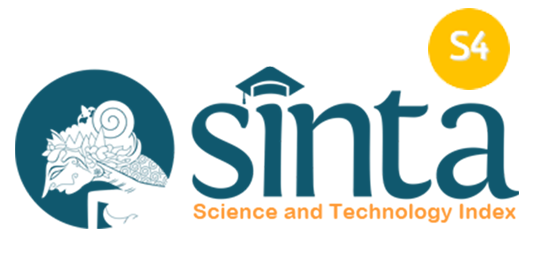QuakeSee: Aplikasi Cross-Platform Python Berbasis Web untuk Otomasi dan Aksesibilitas dalam Pengunduhan Data Gempa Terbuka
Authors
Yudha StyawanDOI:
10.29303/goescienceed.v6i3.968Published:
2024-07-30Issue:
Vol. 6 No. 3 (2025): AgustusKeywords:
QuakeSee, Obspy, otomatisasi, data gempa, antarmuka webAbstract
QuakeSee merupakan aplikasi lintas platform berbasis Python dengan antarmuka web yang dikembangkan untuk meningkatkan efisiensi dan aksesibilitas dalam proses pengunduhan data gempa terbuka. Aplikasi ini memanfaatkan Obspy dan fitur Routing-Client untuk mengoptimalkan pemilihan penyedia data seismik secara otomatis tanpa memerlukan konfigurasi manual. Permintaan HTTP berulang secara otomatis juga dimanfaatkan untuk jumlah kejadian gempa yang tinggi. Melalui antarmuka web yang interaktif, pengguna dapat memperoleh data kejadian gempa, informasi stasiun, serta rekaman seismogram dengan lebih mudah dan cepat. Hasil pengujian menunjukkan bahwa QuakeSee mampu mempercepat proses pengambilan data dibandingkan dengan metode konvensional, khususnya dalam skenario yang melibatkan permintaan data dari beberapa penyedia sekaligus. Selain itu, distribusi dalam format Python Wheel (.whl) serta ketersediaannya di PyPI memungkinkan instalasi yang lebih sederhana dan fleksibel di berbagai sistem operasi. Dengan kombinasi fitur otomasi, antarmuka berbasis web, dan kompatibilitas lintas platform, QuakeSee menjadi solusi yang efektif dan andal bagi pelajar, peneliti serta praktisi seismologi dalam mengakses dan mengelola data gempa secara lebih efisien.References
Beyreuther, M., Barsch, R., Krischer, L., Megies, T., Behr, Y., & Wassermann, J. (2010). Obspy: A python toolbox for seismology. Seismological Research Letters, 81(3), 530–533. https://doi.org/10.1785/gssrl.81.3.530
Cabieces, R., Olivar-Castaño, A., Junqueira, T. C., Relinque, J., Fernandez-Prieto, L., Vackár, J., Rösler, B., Barco, J., Pazos, A., & García-Martínez, L. (2022). Integrated Seismic Program (ISP): A new python gui-based software for earthquake seismology and seismic signal processing. Seismological Research Letters, 93(3), 1895–1908. https://doi.org/10.1785/0220210205
Christensen, S., Brown, M., Haehnel, R., Church, J., Catlett, A., Schofield, D., … Smith, S. (2022). A python pipeline for rapid application development (RAD). 240–243. Austin, Texas. https://doi.org/10.25080/majora-212e5952-023
Havskov, J., Voss, P. H., & Ottemöller, L. (2020). Seismological observatory software: 30 years of SEISAN. Seismological Research Letters, 91(3), 1846–1852. https://doi.org/10.1785/0220190313
Helmholtz-Centre Potsdam – GFZ German Research Centre for Geosciences, & gempa GmbH. (2008). The SeisComP seismological software package. GFZ Data Services. https://doi.org/10.5880/GFZ.2.4.2020.003
Kennedy, M. A., Greco, T. M., Song, B., & Cristea, I. M. (2022). Htt-omni: A web-based platform for huntingtin interaction exploration and multi-omics data integration. Molecular & Cellular Proteomics, 21(10), 100275. https://doi.org/10.1016/j.mcpro.2022.100275
Khusnani, A., Anggraini, A., Jufriansah, A., Zulfakriza, Z., Pramudya, Y., Margiono, & Wae, K. W. (2024). Relocation study of flores sea hypocenter (Mw = 7.3) based on single station estimation using obspy. Journal of Geoscience, Engineering, Environment, and Technology, 9(2), 113–120. https://doi.org/10.25299/jgeet.2024.9.2.14503
Kiswanti, S., Palupi, I. R., Raharjo, W., Arwa, F. Y., & Dwiyanti, N. E. (2021). The study of automatic picking of p and s wave arrival and identification of earthquake sequence pattern using scalogram in obspy(Python). IOP Conference Series: Earth and Environmental Science, 873(1), 012014. https://doi.org/10.1088/1755-1315/873/1/012014
Klein, F. W. (2002). User’s guide to HYPOINVERSE-2000, a Fortran program to solve for earthquake locations and magnitudes. U.S. Geological Survey Open-File Report 02-171. https://doi.org/10.3133/ofr02171
Moreno, B., Ottemoller, L., Havskov, J., & Olsen, K. A. (2002). Seisweb: A client-server-architecture-based interactive processing tool for earthquake analysis. Seismological Research Letters, 73(1), 84–89. https://doi.org/10.1785/gssrl.73.1.84
Sergeev, K., & Sergeev, S. (2018). Methods of screening for cross-correlation identification of antropogenic seismic events. In EGU General Assembly Conference Abstracts (p. 835).
Storchak, D. A., Di Giacomo, D., Bondar, I., Engdahl, E. R., Harris, J., Lee, W. H. K., … Bormann, P. (2013). Public release of the isc-gem global instrumental earthquake catalogue(1900-2009). Seismological Research Letters, 84(5), 810–815. https://doi.org/10.1785/0220130034
Storchak, D. A., Harris, J., Brown, L., Lieser, K., Shumba, B., Verney, R., … Korger, E. I. M. (2017). Rebuild of the Bulletin of the International Seismological Centre (Isc), part 1: 1964–1979. Geoscience Letters, 4(1), 32. https://doi.org/10.1186/s40562-017-0098-z
Storchak, D. A., Harris, J., Brown, L., Lieser, K., Shumba, B., & Di Giacomo, D. (2020). Rebuild of the Bulletin of the International Seismological Centre (Isc)—part 2: 1980–2010. Geoscience Letters, 7(1), 18. https://doi.org/10.1186/s40562-020-00164-6
Templeton, M. E., & Gough, C. A. (1999). Web seismic Un∗x: Making seismic reflection processing more accessible. Computers & Geosciences, 25(4), 421–430. https://doi.org/10.1016/S0098-3004(98)00146-0
Tjernström, J., Gallagher, M., Holt, J., Svensson, G., Shupe, M. D., Day, J. J., … Godøy, Ø. (2024). Accelerating research through community open source software for a standardized file format to improve process representation in numerical weather prediction models. EGUsphere, 1–20. https://doi.org/10.5194/egusphere-2024-2088
Turner, R. J., Latto, R. B., & Reading, A. M. (2021, August 19). An ObsPy library for event detection and seismic attribute calculation: Preparing waveforms for automated analysis. arXiv. https://doi.org/10.48550/arXiv.2108.08601
Wellmann, F., Virgo, S., Escallon, D., De La Varga, M., Jüstel, A., Wagner, F. M., … Chen, Q. (2022). Open AR-Sandbox: A haptic interface for geoscience education and outreach. Geosphere, 18(2), 732–749. https://doi.org/10.1130/GES02455.1
Weston, J., Engdahl, E. R., Harris, J., Di Giacomo, D., & Storchak, D. A. (2018). ISC-EHB: Reconstruction of a robust earthquake data set. Geophysical Journal International, 214(1), 474–484. https://doi.org/10.1093/gji/ggy155
Yi-bo P., Ming-ming J., & Yin-shuang A. I. (2019). Efficient scheme to extract Green functions of Rayleigh wave from seismic noise via a Python library for seismology-ObsPy. Progress in Geophysics, 34(3), 919–927. https://doi.org/10.6038/pg2019CC0119












